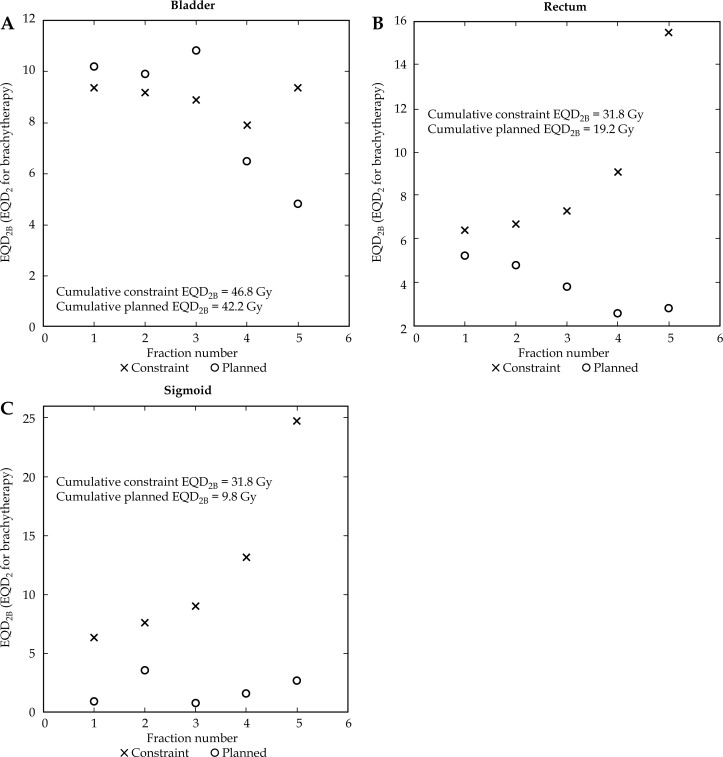Fig. 5.
Adaptive planning for case 1. A) In the first 3 fractions, the applicator angle used was 30°, and the bladder dose in the plan was larger than the EQD2 constraint in the respective fraction. Using a 45° applicator in the 4th and 5th fractions helped reduce the bladder dose, thereby meeting the constraint in those fractions as well as cumulatively. B) In the first 3 fractions, the rectal dose was within tolerance. Using a 45° applicator in the 4th and 5th fractions did not increase the rectal dose for this case. C) In the first 3 fractions, the sigmoid dose was within tolerance. Using a 45° applicator in the 4th and 5th fractions did not increase the sigmoid dose for this case

